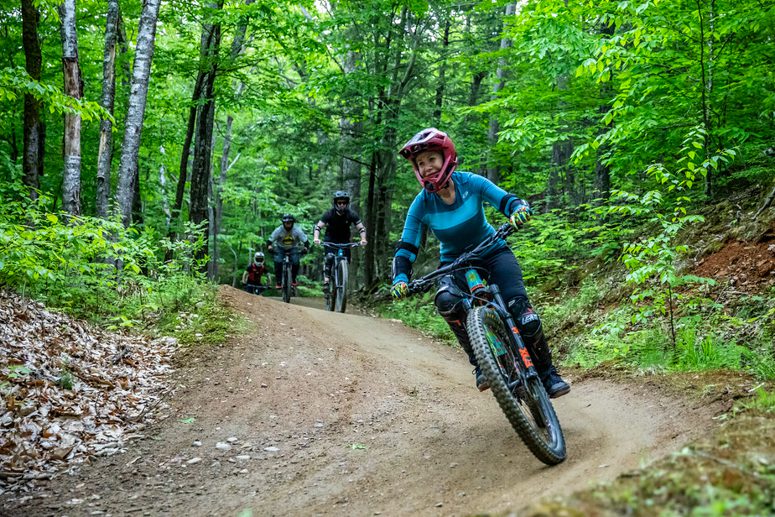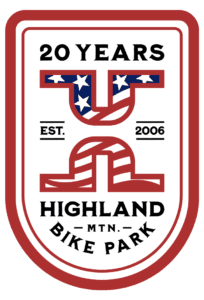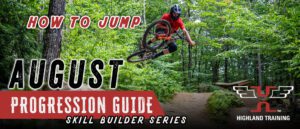A Monthly Online Skill Builder Series
APRIL EDITION 2025
As we roll into spring and the park comes to life, it’s the perfect time to focus on dialing in your setup, refreshing your skills, and getting inspired for a season of progression. In this month’s guide, we’re kicking things off with a From the Coaches video on bike setup—because a well-tuned ride is the foundation of confidence on the trails. Then, we’re sharing a rider story from Derek, a dedicated Adult Ayr participant who continues to push his riding to new levels year after year. And finally, Highland opens for Season Pass Holders on April 23rd, with the season officially kicking off for everyone on April 24th—so enjoy these tips, get your bike dialed, and we’ll see you at the park!
📌 Don’t miss out—Bookmark our Blog
My Name is Derek Boyle
I grew up in Melrose, Massachusetts, and I currently live in Belmont, Massachusetts.
My background in mountain biking goes back to when I was in—I’d say—elementary school. It was more BMX stuff back then, but I got an early rigid mountain bike too. Then in high school, I saved up—doing the layaway thing, paying a little every time I went in—and eventually got a Gary Fisher Paragon. It wasn’t a full suspension, but I rode that through high school and into college. I went to St. Mike’s in Vermont. They didn’t have a mountain bike team or anything, but I’d ride in my spare time, when I wasn’t playing on the soccer team.
After college, I played some semi-pro soccer and was off the bike for a while—until I had my third ACL surgery. After that, I said, “I’m gonna stop tearing ligaments and go back to mountain biking… and just break bones.” Around COVID is when I really got back into riding. So yeah, I’ve been riding my whole life, with a little less focus for probably 8 to 10 years while I was focused on soccer.
I started coming to Highland around 2020, during COVID. You were mostly riding by yourself because of the restrictions. That’s actually when I had my biggest injury ever—I broke my own rule about not following someone down a trail I didn’t know. It was a couple guys I had just met, on a trail I’d never ridden. Long story short, it didn’t go well. After four surgeries, I started coming back intermittently, and I developed a whole new appreciation for the mountain. I started to really enjoy the technical eastern hemlock terrain. It wasn’t all about Hellion anymore—I realized there was a whole other part of the mountain that I hadn’t fully appreciated or caught up to.
In 2021, I don’t remember anyone specifically recommending Adult Ayr Academy. At one point, I just decided, “I’m going to do it. Let’s see what happens.” Since then, I haven’t missed one.
How many Adult Ayr sessions have you done?
During one of the sessions—morning of day three, I think—Luca said, “Yeah, I’ll be back in the fall.” So right there at lunch, I signed up for the fall session while still sitting at the table. So yeah, I’m going to be doing my sixth Adult Ayr. I’ll be doing the spring and fall again this year.
My initial struggle before participating in Ayr Academy was more mental. After breaking my ankle—to the point where my foot was no longer connected—it was tough to get back to where I had been. One thing that kept coming up in my head was Reef Drop. I had never done it. I had planned on doing it, and that’s what Adult Ayr Academy was all about for me.
On day two, we were up there, sitting at the top, looking down the drop. Everybody but two of us hit it. I just wasn’t feeling it. I thought, I’ll come back another time.
One of the other guys didn’t do it either—he was down at the bottom looking at it with Luca. I was still up at the top, and I thought, I don’t need to look at it again. If I’m going to do it, I’m going to do it.
So Nate moved, and I didn’t tell anybody. Didn’t say anything—I just went.
The coaches, especially Luca, they knew I could do it. He’s never going to let someone do something if they’re not ready. I’ve seen the way he progresses people over the three days. If someone wants to do something, he’ll kind of suggest, “Let’s go there,” and the group rallies behind it.
But yeah—Nate moved, I went, and I didn’t even ask anyone to film. Still, three other guys got footage at the last second, and then everyone erupted.
I just thought, “S**, I did it.”*
What was your first impressions of the coaching and the structure?
Having done five of these camps so far, you’d think some people would be like, “Okay, I’m in the advanced group with Luca—let’s get going.” But on day one, we don’t even get on the lift until after lunch. We’re in the practice zone, doing flat cornering over and over again. How slow can you go down a hill while braking? It’s the basics.
And you’d think, at times, I’d be like, “Okay, let’s skip this.” But no—especially early in the season, you do those drills and realize, “Man, I’m off. Holy crap.” Then you do it 10, 20 times, and suddenly you’re doing it better and better. Then you take that up to the trail—and you know what we ride the first time we hit the lift?
Freedom Trail.
Flat corner turns on Freedom Trail—the easiest trail in the world. I still remember the first time I ever came to Highland. They said, “Just take Freedom Trail to get a feel for it.”
I went way too fast on my first run, hit a flat corner, slid out, and ripped my shirt.
I think that kind of structure is super important—not just for people who already know how to ride, but for the coaches, too. It gives them a way to assess where everyone is at. Then, when we start hitting bigger stuff, they can focus more on helping the riders who need it early on, without making anyone feel left behind.
That’s huge—because when you’re riding with other people, the camaraderie is just different.
Everyone’s there to help each other. Everyone’s got their phones out, taking videos, sharing tips.
So the group starts sharing tips, helping each other out. It becomes this really supportive environment.

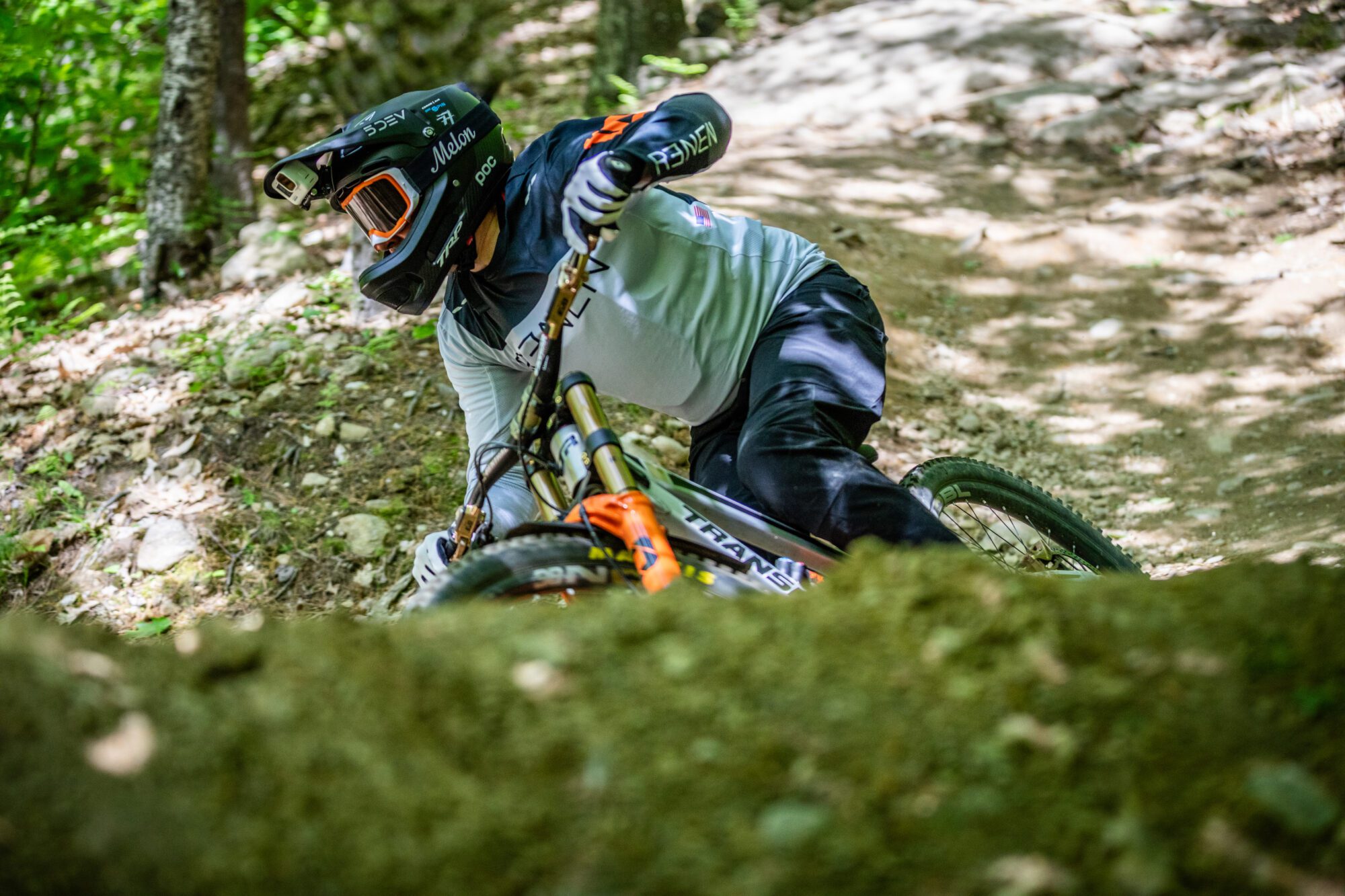
Breakthrough Moments
Aside from the key lessons, you also build confidence just by progressing. You’re learning, and you’re getting better throughout the week. But for the real “aha” stuff, I have to give credit to Ben on this one—and he’ll be proud I actually remember the acronym.
He used the acronym FEAR, and I had to ask him at three separate sessions to remind me what it stood for. I even asked him again a couple times when I ran into him at the mountain. But FEAR stands for False Evidence Appearing Real.
He said it the morning I finally hit Reef Drop. Luca had been saying, “You can do it. You’re hitting the other drops. This one’s not that different—it’s just a little higher, it’s off a rock, whatever.”
And I was sitting there, hesitating, and Ben’s acronym popped into my head.
I thought, “There’s nothing stopping me from doing this other than my own thoughts. There’s no evidence that suggests I can’t do it.”
So I did it.
Another more technical “aha” moment happened last year in the spring. Luca said, “Wow, you’re riding more aggressively and faster than you were last year already,” but then he added, “Something looks off.”
We were on Cat’s Paw, in the quick S-turns after the wall ride. I told him, “I feel like I’m off the back of the bike.”
He filmed me, and after watching it, he asked, “Yeah—what’s up with that?”
I said, “I don’t know. I feel like I can’t get over the front like I used to.”
Luca said, “I think it’s because you’re riding faster, more confidently—but your bike might not be set up to match that now. I think we need to lower the front end.”
So at lunch, we let a little air out of the fork and removed maybe a 5mm spacer under the stem. Suddenly, the positioning felt right again. The year before, it didn’t matter because I wasn’t riding as fast or as aggressively—but now, the bike was actually holding me back. That 5mm change completely transformed my season.
Now I think a lot more about setup. When someone asks, “What’s this going to do?”—I think about it differently. What could moving my levers change? What might a small adjustment to my stack or bar position affect?
Luca will still tweak little things, like lever angles, and it makes a difference. Those are the “aha” moments—things someone else can notice that you might never realize on your own.

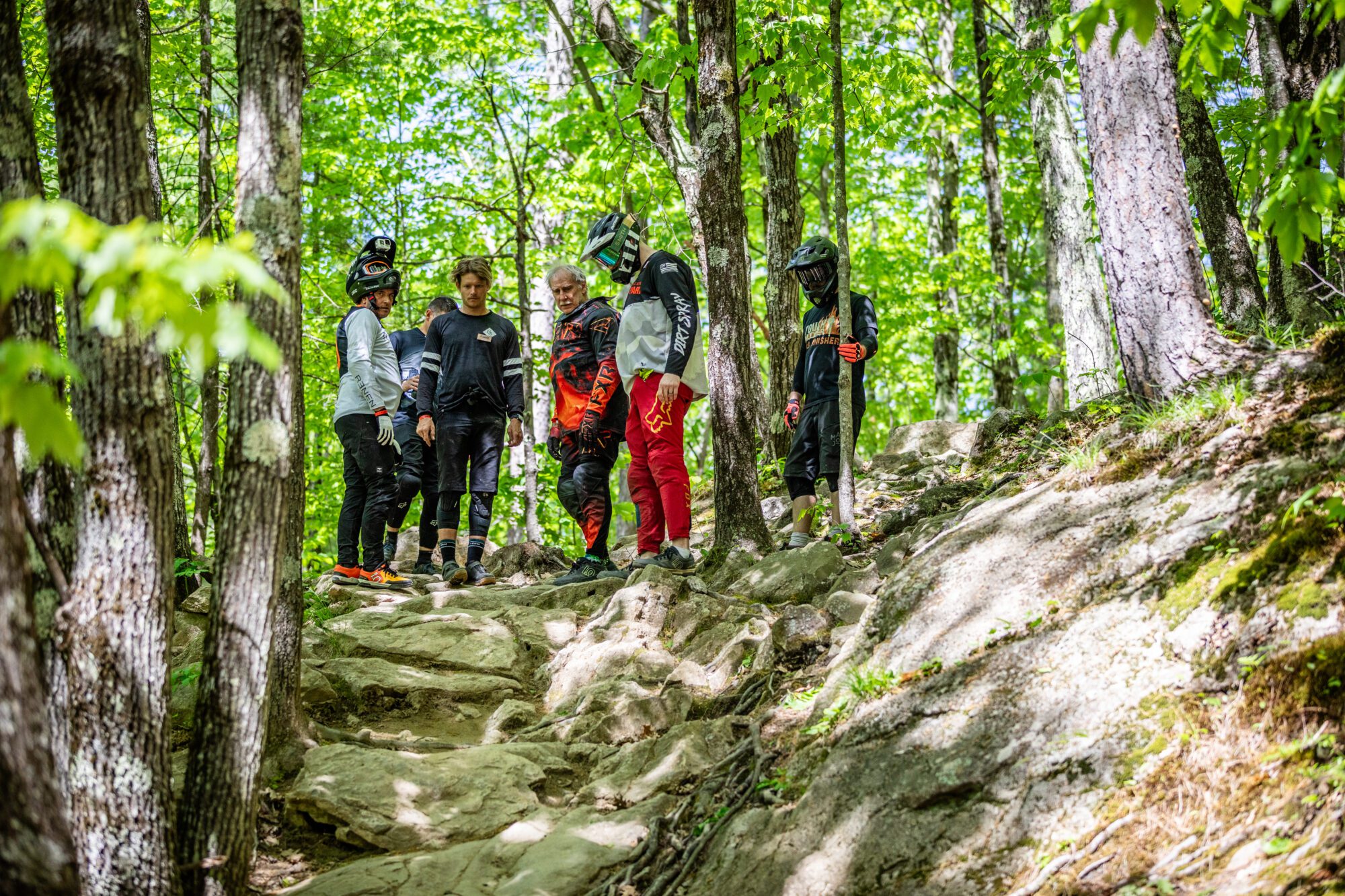
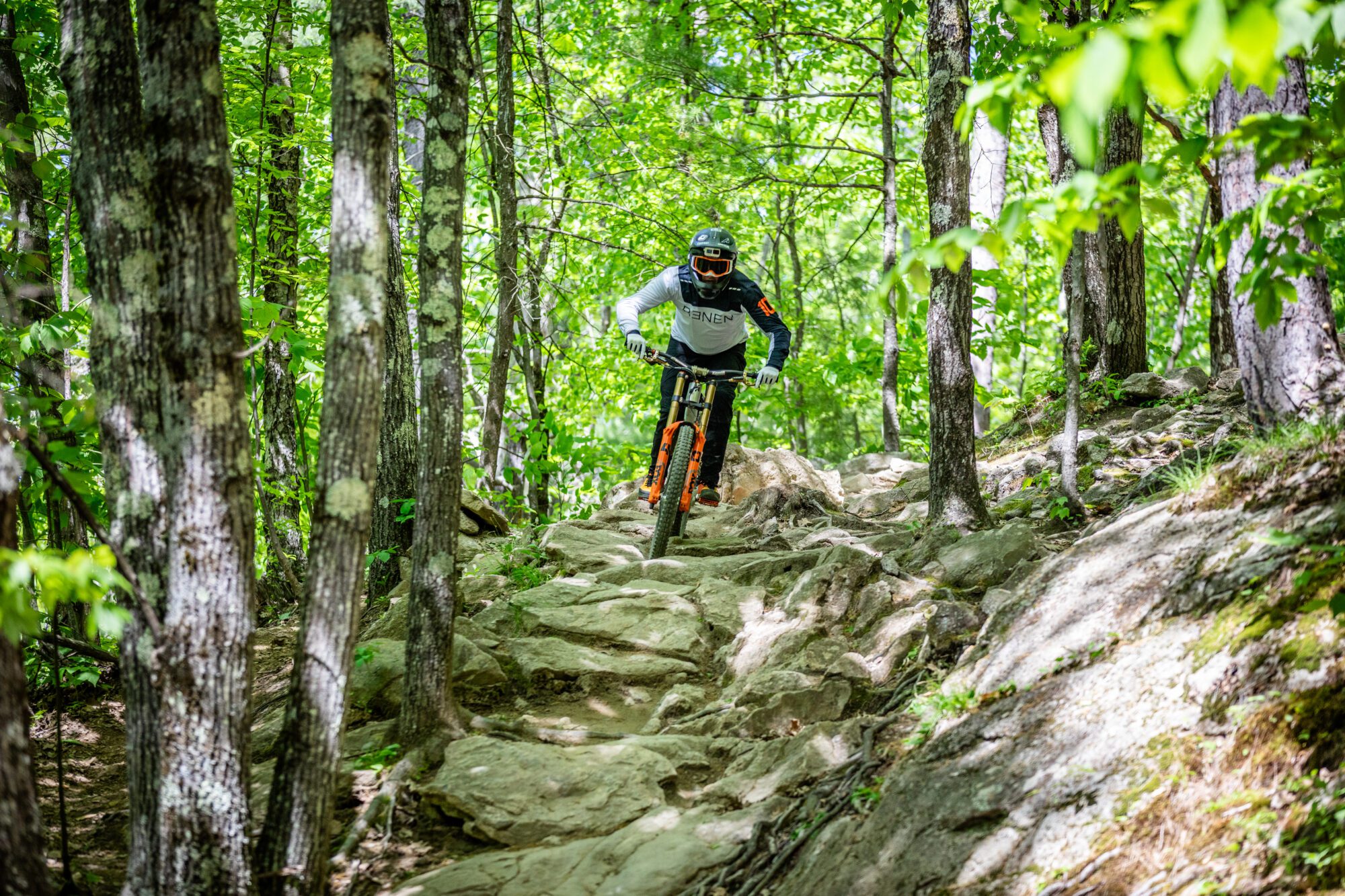
What would you say to other riders considering Adult Ayr Academy?
The answer is—if you’re already considering it, stop. Just go sign up. There’s nothing to think about.
If it’s already in your head that you might need it, or want to try it, drop what you’re doing, sign up, and trust that it’ll change everything for you. It’ll change the way you ride, the kind of riding you think you like, and maybe even what you end up realizing you like more.
The benefits just go on—and I’ve already talked about a bunch of them—but if I had to say one thing, it’s this: if you’re considering it, it’s already decided. You need to do it.
“Don’t hesitate. I considered it for a year and regretted not doing it sooner.”

This month, highlighting Adult Ayr Camp, our flagship multi-day coaching experience for gravity riders. Every session of Adult Ayr Academy starts with a focus on mountain bike core skills. Day one begins with introductions, bike checks, and riding positions. Building on a solid foundation, we’ll turn the focus to advanced cornering techniques, wheel lifts, jumps, and drops for the weekend. If you want to learn how to hit some of Highland’s signature features, we will focus on the skill set needed to conquer them!
If you’ve read Derek’s story below, you’ll see why he keeps coming back—progression, personalized coaching, and an awesome community of riders who are all pushing their limits together.
With several long weekends coming up in May and June, now’s the perfect time to plan your session. Whether you’re dialing in drops, getting comfortable with airtime, or refining your flow, Adult Ayr gives you the tools—and the terrain—to ride with more confidence.
Spots fill up fast—grab yours and get ready to level up.
May 30th – June 1st
June 7 & 8 – Women’s Ayr
June 14th – 15th
Upcoming Dates & Programs
- Season Pass Holder’s Day April 23
- Opening Day April 24
-
FYR 3-Pack – April Promo – Purchase a FYR 3-pack in April and receive a 4th visit on us!
- Kids Camp
- After School Program
- Adult Ayr Academy
- Women’s Gravity Weekend June 7 & 8
